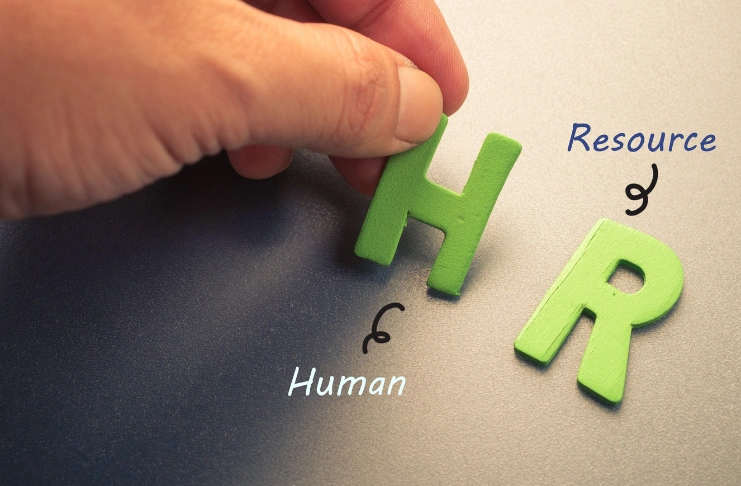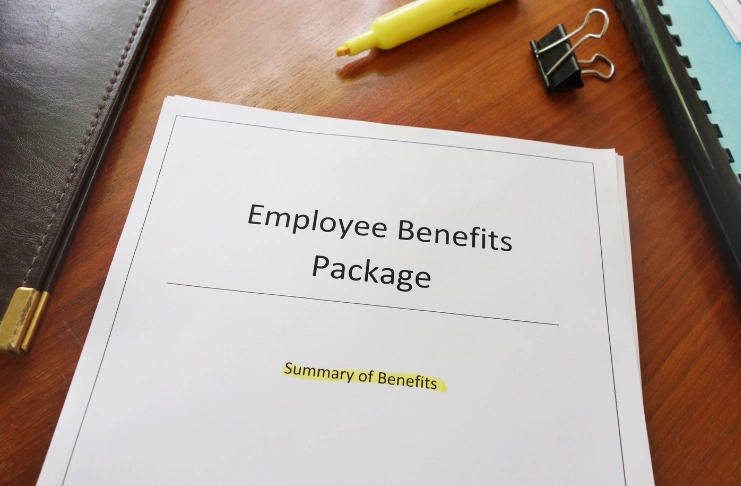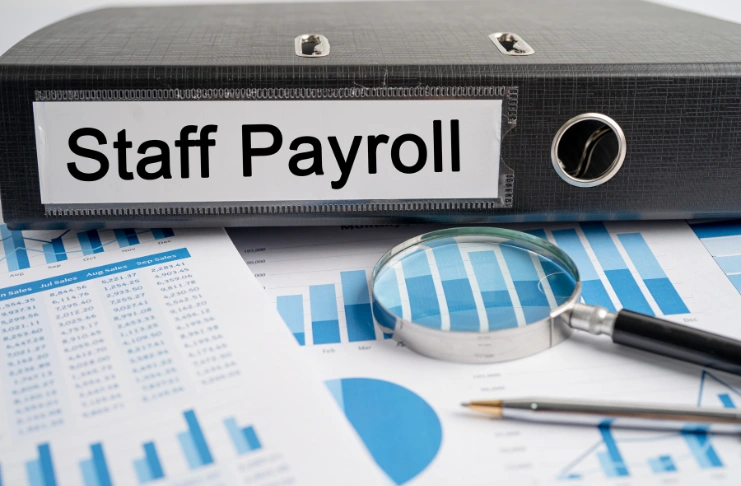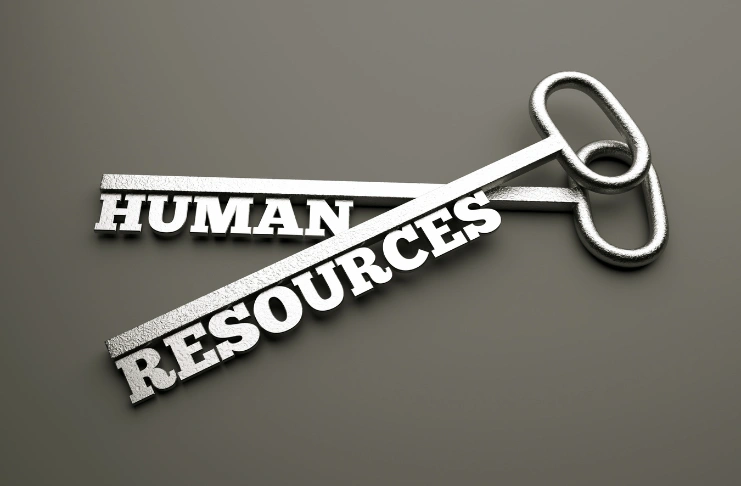Long gone are the days when HR was just a back-office function. Today, it’s a frontline force that directly impacts labor costs, legal compliance, employee retention, and customer satisfaction.
Without a structured HR framework, restaurant owners risk high turnover, lawsuits, and operational breakdowns. In fact, the Fair Labor Standards Act (FLSA) and other labor laws leave no margin for error. A single misstep can trigger financial penalties and reputational damage.
A proactive HR department doesn’t just protect restaurants against these risks but builds a positive work environment that fuels employee satisfaction, workforce stability, and brand loyalty.
This guide breaks down how to implement, manage, and optimize HR for restaurants with proven strategies and insights tailored to the U.S. food and beverage market. Stay rooted!
Why is Human Resources Vital for the Restaurant Industry?

The restaurant industry operates on thin margins, high turnover rates, and strict regulatory oversight. In such an environment, human resources become an infrastructure that ties it all together: legal compliance, operational efficiency, and workforce engagement.
An HR department oversees employee recruitment, manages labor costs, enforces labor laws, and cultivates a company culture that boosts employee performance and customer satisfaction. It ensures the restaurant business operates smoothly while minimizing legal and operational risks.
Failing to prioritize HR exposes restaurants to legal penalties under the Fair Labor Standards Act (FLSA), Americans with Disabilities Act (ADA), and Occupational Safety and Health Administration (OSHA) regulations. Wage violations, discriminatory practices, and unsafe working conditions can quickly escalate internal issues into public crises.
Beyond compliance, effective HR processes optimize employee scheduling, offer competitive benefits, and design training programs that increase workforce productivity. They build a resilient team that can sustain high service standards even under pressure.
Without a structured HR framework, even the best restaurant concepts are vulnerable and often unsustainable.
INDUSTRY INSIGHT
| The U.S. restaurant industry continues to grapple with significant labor challenges. According to a report, 32% of restaurant operators identify recruitment and retention as their top concern, with 59% reporting that labor challenges have led to operating below full capacity. Moreover, 65% of restaurant operators describe the current labor market as “tight” or “very tight,” highlighting the ongoing difficulties in hiring and retaining qualified staff. These persistent labor shortages (that mostly hover around 75% year-round) have prompted many restaurants to increase wages and benefits in an effort to attract and retain employees. However, rising labor costs, coupled with inflation and increased food prices, have strained profitability for mosts. This is where comes the need for a strategic HR framework that not only attracts new talents but also retain the existing ones. |
Implementing HR: Aligning It with Business Goals

To unlock the full potential of HR, it must be aligned with your overall business strategy. In restaurants, this means recognizing that HR is not just a support function but a driver of profitability and operational efficiency.
A strategic HR approach:
Optimizes Labor Costs: By improving recruitment, retention, and scheduling processes, HR help control one of the highest expenses in a restaurant: labor costs.
Enhances Customer Satisfaction: Happy employees lead to happy customers. A strategic HR framework ensures that your team is trained, engaged, and motivated to provide excellent service.
Fosters a Positive Culture: A positive work culture encourages loyalty and performance. HR is essential in shaping and nurturing this culture, which ultimately impacts staff retention and service quality.
Aligning HR practices with business objectives ensures that every HR decision is made with the restaurant’s success in mind. Now, let’s break down how to execute these strategies effectively.
Key HR Functions for Restaurants (and How to Execute Them)
In the restaurant business (or any business, for that matter), human resources is an integrated system of essential functions that directly impact its operational success. These HR functions ensure a business stays legally compliant, financially stable, and workforce-ready in a competitive market.
Here’s exactly what each function involves and how you can implement them in your restaurant with precision:
Recruitment and Hiring

Effective restaurant staffing begins with strategic recruitment. Create detailed job descriptions that clearly outline responsibilities, required skills, and cultural fit indicators. Implement a structured interview process that evaluates both technical abilities and soft skills essential for customer-facing roles.
Consider implementing:
- Pre-employment assessments to test food knowledge or service scenarios
- Working interviews where candidates demonstrate skills in real-time
- Cross-departmental interview panels to ensure team compatibility
- Clear career progression paths to attract ambitious talent
Background checks should verify employment history, check references, and ensure compliance with food safety certifications. Establish standardized onboarding procedures that introduce new hires to your restaurant’s culture, operational standards, and safety protocols.
Compliance Management
Restaurant HR must navigate complex regulatory requirements, including wage and hour laws, food safety regulations, and employment verification. Develop robust systems for:
- Proper classification of employees (exempt vs. non-exempt)
- Accurate timekeeping and overtime calculation
- Tip reporting and distribution compliance
- I-9 verification and documentation
- Workers’ compensation insurance management
- Regular labor law posting updates
Create a compliance calendar to track renewal dates for permits, certifications, and mandatory trainings. Consider investing in HR software specifically designed for restaurants to automate compliance tracking and reduce human error.
Training and Development

Comprehensive training programs drive service quality and operational consistency. Design role-specific training modules covering:
- Food safety and sanitation protocols
- Menu knowledge and allergen awareness
- Point-of-sale system operation
- Customer service standards
- Conflict resolution techniques
Implement cross-training initiatives to build operational flexibility and career advancement opportunities. Document training completion and schedule regular refresher courses, particularly for safety-critical procedures.
Create clear development pathways that allow high-performing staff to progress from entry-level positions to management roles, reducing turnover and building institutional knowledge.
Performance Management
Establish measurable performance metrics tailored to each position:
- For servers: sales averages, customer feedback scores, accuracy
- For kitchen staff: food quality, preparation speed, waste management
- For managers: team retention rates, cost control, and customer satisfaction
Conduct regular performance reviews using consistent evaluation criteria. Implement a progressive discipline policy that addresses performance issues fairly while documenting all corrective actions.
Recognition programs that celebrate exceptional performance help motivate staff and reinforce desired behaviors. Consider public recognition for service excellence, performance-based incentives, and team achievement celebrations.
Compensation and Benefits

Design competitive compensation packages based on local market research. Clearly communicate pay structures, including:
- Base wages for different positions
- Tip policies and distribution methods
- Shift differentials and premium pay opportunities
- Performance-based incentive structures
Even with limited resources, smaller restaurants can offer meaningful benefits like: Flexible scheduling accommodations, meal programs or staff discounts, health insurance contribution options, professional development opportunities, employee assistance programs, etc.
Regularly benchmark your compensation against competitors to ensure you remain competitive in attracting and retaining talent.
Employee Relations and Culture
The work environment in your restaurant directly impacts employee satisfaction and retention. A positive, inclusive culture is critical for reducing turnover and increasing productivity.
To foster a positive workplace culture:
- Open communication channels across all levels
- Regular staff meetings to address concerns
- Anonymous feedback mechanisms
- Clear conflict resolution procedures
- Team-building activities that strengthen relationships
Develop an employee handbook that clearly articulates policies, expectations, and values. Ensure managers are trained to handle sensitive issues like harassment complaints, accommodation requests, and interpersonal conflicts.
Create opportunities for staff input on menu development, service improvements, and operational changes to build engagement and ownership.
Workforce Planning and Scheduling

Implement data-driven scheduling practices that:
- Analyze peak service periods and staffing needs
- Balance employee availability with operational requirements
- Comply with predictive scheduling laws where applicable
- Provide adequate notice of schedule changes
- Monitor labor costs as a percentage of revenue
Utilize scheduling software that enables employees to swap shifts, request time off, and communicate availability changes efficiently. Develop contingency staffing plans for unexpected absences, special events, and seasonal fluctuations.
Health and Safety Management
Maintaining a safe work environment is non-negotiable in the restaurant industry. From food safety to workplace injuries, proactive health and safety management ensures legal compliance and protects staff.
However, it requires:
- Comprehensive safety training for all equipment
- Regular safety inspections and hazard assessments
- Clear protocols for handling workplace injuries
- Proper documentation of all incidents
- Return-to-work programs for injured employees
Create and maintain OSHA-compliant safety documentation. Establish safety committees that include representatives from both front and back-of-house to identify potential issues before they become problems.
Technology Integration

Modern restaurant HR leverages technology to improve staff and bottom-line efficiency. They use:
- HRIS systems to centralize employee data
- Applicant tracking systems for recruitment management
- Digital onboarding platforms to streamline paperwork
- Mobile-friendly scheduling applications
- Electronic timekeeping with biometric verification
- Learning management systems for training delivery and tracking
Tip: Select integrated systems that communicate with your POS and accounting software to reduce administrative burden and improve data accuracy.
Optimizing HR for Restaurants’ Long-Term Success
The restaurant industry never stands still, and neither should your HR practices. While establishing solid foundations is important, truly successful restaurants continuously refine their people management strategies to stay ahead of industry shifts and workforce expectations.
1. Strategic HR Planning
Restaurant operators who thrive long-term make HR planning as routine as inventory management. Instead of reacting to problems as they arise, establish a quarterly review cycle that systematically evaluates your entire HR ecosystem.
Begin each quarter with an audit examining policy compliance and documentation completeness. Follow this by benchmarking your key metrics against industry standards: how does your turnover rate compare to similar establishments? Are your training programs delivering measurable improvements in performance?
Then, use these insights to drive targeted improvement initiatives for the coming months. Also, map out your intentions for system upgrades, training enhancements, and culture development initiatives over the next several years.
2. Harnessing HR Data

Modern restaurant management requires moving beyond gut feelings to data-driven decision-making, especially in HR.
So, start by calculating the true cost of hiring for each position type in your establishment. You might be surprised to discover which roles are creating the greatest financial drain when they turn over. Track how quickly new employees reach full productivity, and analyze retention patterns by department and manager.
These metrics reveal hidden opportunities for improvement. For instance, if servers working under one manager consistently stay longer than those under another, what leadership approaches account for this difference? When exit interviews consistently mention scheduling inflexibility, what process changes could address this concern?
Create simple monthly dashboards comparing your actual performance against targets. This visual accountability system will help you identify emerging trends before they become costly issues.
3. Technology as an HR Multiplier
Strategic technology deployment can transform your HR function without requiring additional staff. For example:
Digital employee scheduling with demand forecasting capabilities ensures you’re never understaffed during rush periods while controlling labor costs during slower times.
Mobile-first communication platforms keep your entire team informed of menu changes, special events, and policy updates without relying on bulletin boards or pre-shift meetings alone.
Automated compliance tracking eliminates the anxiety of keeping certifications and training requirements current. When a food handler’s certification is approaching expiration, the system alerts both the employee and management with sufficient time to address it.
Employee self-service portals dramatically reduce administrative burdens by allowing staff to manage their own schedule swaps, time-off requests, and document access. This not only improves efficiency but also increases employee satisfaction by providing greater control over their work experience.
4. Modernizing Compensation Approaches

Traditional restaurant compensation structures rarely reflect the actual value that different employees bring to the operation.
Consider implementing tiered wage systems based on certification levels and demonstrated skills. For example, servers who can effectively sell wine pairings or handle complex dietary requests deserve better compensation.
Performance-based incentives tied to specific, measurable outcomes will create alignment between individual goals and organizational priorities. When back-of-house staff receive bonuses for maintaining food cost targets while meeting quality standards, their decision-making naturally supports operational success.
For management positions, consider creating profit-sharing options that reinforce the connection between leadership effectiveness and restaurant profitability. These programs will encourage managers to think like owners when making operational decisions.
5. Building Distinctive Culture
The restaurants that maintain the lowest turnover rates aren’t necessarily those paying the highest wages. They’re the ones who create environments where people genuinely want to work. A formal onboarding buddy system helps new employees integrate quickly while establishing supportive relationships from day one.
Cross-functional team work break down the traditional front-of-house versus back-of-house divides that plague many restaurants. When servers understand kitchen constraints and line cooks appreciate customer expectations, collaborative problem-solving replaces finger-pointing.
Regular employee feedback sessions also create psychological safety and demonstrate that management genuinely values staff perspectives. These conversations often surface operational inefficiencies that would otherwise remain hidden.
6. Proactive Compliance Management
The regulatory environment for restaurants grows more complex each year. Create a compliance calendar with automated alerts for approaching deadlines to prevent costly oversights.
Implement monthly mini-audits focusing on specific high-risk areas rather than attempting detailed reviews that often get postponed due to operational demands.
Try to establish relationships with employment law specialists for quarterly regulatory updates tailored to your specific operation. These proactive briefings will cost far less than addressing violations after they occur.
7. Evolving Training Approaches

Traditional one-and-done training rarely creates lasting behavioral change. Replace single orientation sessions with structured 30/60/90 day onboarding sequences that gradually introduce complex concepts while reinforcing foundational skills.
Microlearning modules delivered via mobile devices provide continuous skill reinforcement without requiring extended time away from the floor. Five-minute refreshers on wine knowledge or allergen protocols can be completed during slow periods or before shifts begin.
Create certification levels with corresponding wage increases to incentivize skill development. When employees see direct financial benefit from mastering new skills, engagement in training naturally increases.
By treating HR optimization as an ongoing strategic priority rather than a periodic project, you can create sustainable competitive advantages that result in higher retention, first-in-class customer experiences, and, ultimately, healthier profit margins.
Conclusion
In today’s fast-paced and highly competitive restaurant industry, having a well-structured HR strategy is non-negotiable. It ensures compliance with labor laws, minimizes turnover, and fosters a culture that leads to exceptional customer service.
By aligning HR practices with your business strategy and continually refining them to meet the evolving needs of the restaurant sector, you can set the stage for sustainable growth and profitability.
Frequently Asked Questions
Do restaurants have an HR department?
Yes, many restaurants, especially larger ones, have an HR department. However, smaller restaurants might not have a dedicated HR team and may assign HR responsibilities to managers or owners. In these cases, HR functions are often outsourced or handled part-time by third-party providers.
What is HR in a restaurant?
HR in a restaurant is responsible for managing various functions, including recruitment, employee training and development, legal compliance, benefits administration, and performance management. HR ensures that restaurant staff are hired, onboarded, trained, and retained effectively, contributing to a positive workplace culture and ensuring operational efficiency.
How should I talk to HR?
When speaking to HR, it’s important to be clear, professional, and respectful. Be specific about the issue or concern you want to discuss, whether it’s related to benefits, workplace policies, conflict resolution, or performance. Always be prepared with any documentation or evidence to support your conversation.
What are the 7 HR areas?
The 7 key areas of HR are:
– Recruitment and Staffing
– Training and Development
– Performance Management
– Compensation and Benefits
– Employee Relations
– Legal Compliance
– Health and Safety Management
These areas cover the essential functions that HR handles within any organization, including restaurants.
5. What does HR do in a restaurant?
In a restaurant, HR handles recruitment, hiring, and onboarding of new employees, ensures legal compliance with labor laws, manages employee benefits and compensation, organizes training programs for skill development, resolves workplace conflicts, and maintains a positive company culture. HR also tracks performance metrics and works on employee retention strategies.
6. What is HR implementation?
HR implementation refers to the process of putting HR strategies, policies, and systems into action within an organization. It involves ensuring that all HR functions are effectively executed and aligned with business goals.
7. How to implement HR in a small business?
To implement HR in a small business:
– Define clear HR policies and procedures, even if they are basic.
– Implement a simple recruitment and onboarding process.
– Use HR software to manage employee data and payroll.
– Train managers to handle basic HR responsibilities like performance management and conflict resolution.
– Stay compliant with labor laws, including wages, working hours, and safety standards.
– Foster a positive work environment with regular feedback and recognition programs.
8. How should HR strategies be implemented?
HR strategies should be implemented with clear communication, effective planning, and alignment with business goals. Start by assessing the current HR trends, identifying gaps, and setting priorities. Communicate changes to the team, train managers on new practices, and monitor progress regularly to make necessary adjustments.
9. Do restaurants have to have HR?
While restaurants aren’t legally required to have a dedicated HR department, it is highly beneficial, especially as businesses grow. Having an HR function helps ensure compliance with labor laws, improves employee satisfaction and retention, manages recruitment effectively, and reduces the risk of costly legal issues.
10. What are the 7 roles of HR?
The 7 primary roles of HR are:
– Hiring and onboarding new employees.
– Offering learning and career development opportunities.
– Monitoring and evaluating employee performance.
– Managing pay, bonuses, and benefits.
– Resolving conflicts and maintaining employee satisfaction.
– Ensuring adherence to labor laws and regulations.
– Ensuring workplace safety and managing health risks.
11. What are the 4 C’s of HR policies?
The 4 C’s of HR policies are:
Compliance: Ensuring adherence to laws and regulations.
Consistency: Applying policies uniformly across the organization.
Clarity: Making policies clear and understandable.
Communication: Ensuring policies are communicated effectively to employees.
12. What is the role of human resource management in hospitality industry?
In the hospitality industry, HR plays a key role in recruitment, training, and managing staff to provide excellent service. They are responsible for ensuring legal compliance with labor laws, managing compensation and benefits, addressing employee relations, and fostering a positive culture.
13. What are the 5 main areas of HRM?
The five main areas of Human Resource Management (HRM) are:
Recruitment and Staffing: Hiring and retaining the right talent.
Training and Development: Providing employees with skills and growth opportunities.
Performance Management: Monitoring and improving employee performance.
Compensation and Benefits: Managing employee remuneration and benefits packages.
Employee Relations: Fostering a positive work environment and resolving workplace issues.





